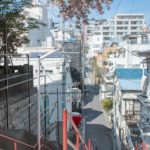 The concept of planned suburban neighborhoods, or “new towns,” originated in England and spread across Europe and East Asia, influencing urban development in Japan, South Korea, Hong Kong, and Singapore. In Japan, over 2,900 such towns were constructed, but many now face steep population declines and aging demographics, forcing them to adapt to new realities.
The concept of planned suburban neighborhoods, or “new towns,” originated in England and spread across Europe and East Asia, influencing urban development in Japan, South Korea, Hong Kong, and Singapore. In Japan, over 2,900 such towns were constructed, but many now face steep population declines and aging demographics, forcing them to adapt to new realities.
Senboku New Town, one of Japan’s largest, illustrates this challenge. Built to house 170,000 residents, its population had dwindled to 115,000 by 2022. Meanwhile, its elderly population grew sharply, with residents aged 65 and older comprising 37.1% of the total. As local businesses shuttered, many seniors struggled to access basic services, making daily life increasingly untenable.
In response, community-driven initiatives began reshaping Senboku-NT with support from nonprofits, social welfare groups, universities, and local government. One standout effort, the Senboku Hottokenai Network Project, repurposed vacant properties to serve as supportive housing for seniors, group homes for individuals with disabilities, and community restaurants. These initiatives not only improved livability in Senboku-NT but also inspired similar transformations in neighboring areas.
Community-led projects
Research from Osaka Metropolitan University highlights the potential of such collaborative, community-led projects. By embracing a model of “Healthy New Towns,” old new towns can adapt to demographic shifts while fostering inclusivity and sustainability.
“Hottokenai translates to ‘leave no one behind,’ echoing the United Nations’ Sustainable Development Goals,” the researchers note. “Our findings underscore the need for broader implementation of urban transformation programs to reinvigorate aging new towns across East Asia.”
As Japan and its neighbors grapple with aging populations, Senboku-NT offers a blueprint for turning aging infrastructure into vibrant, supportive communities.